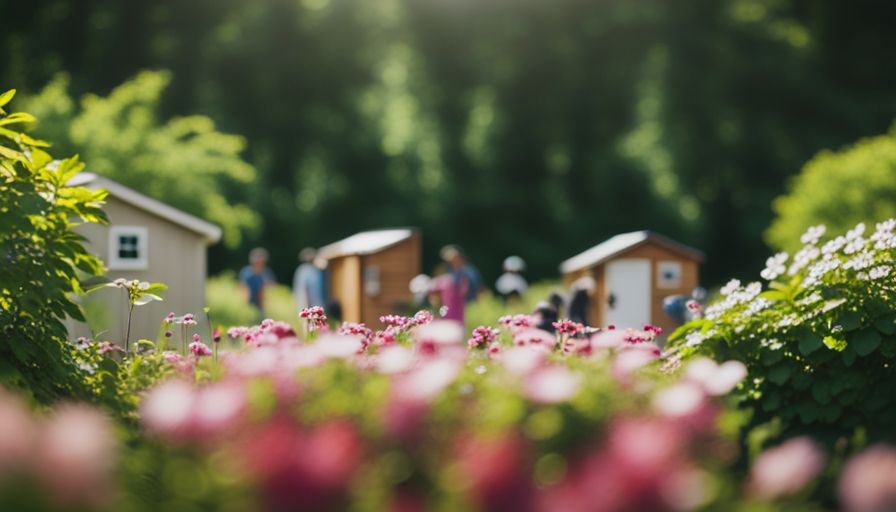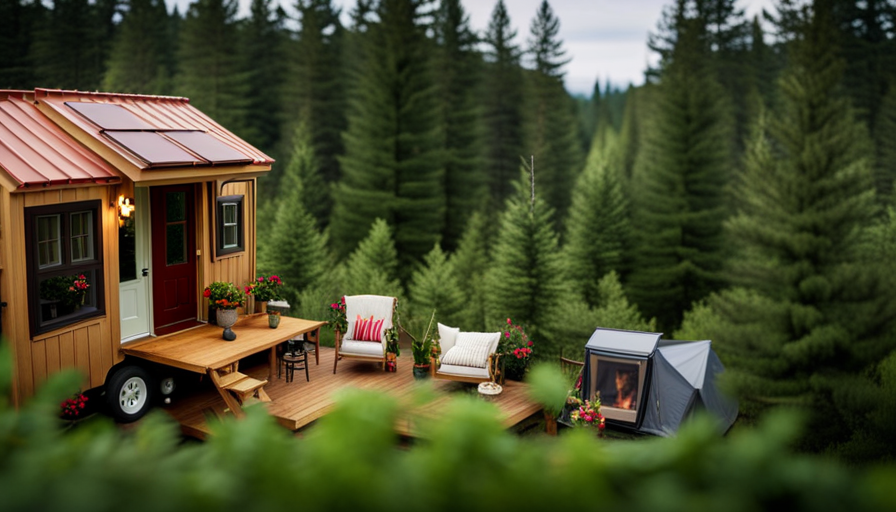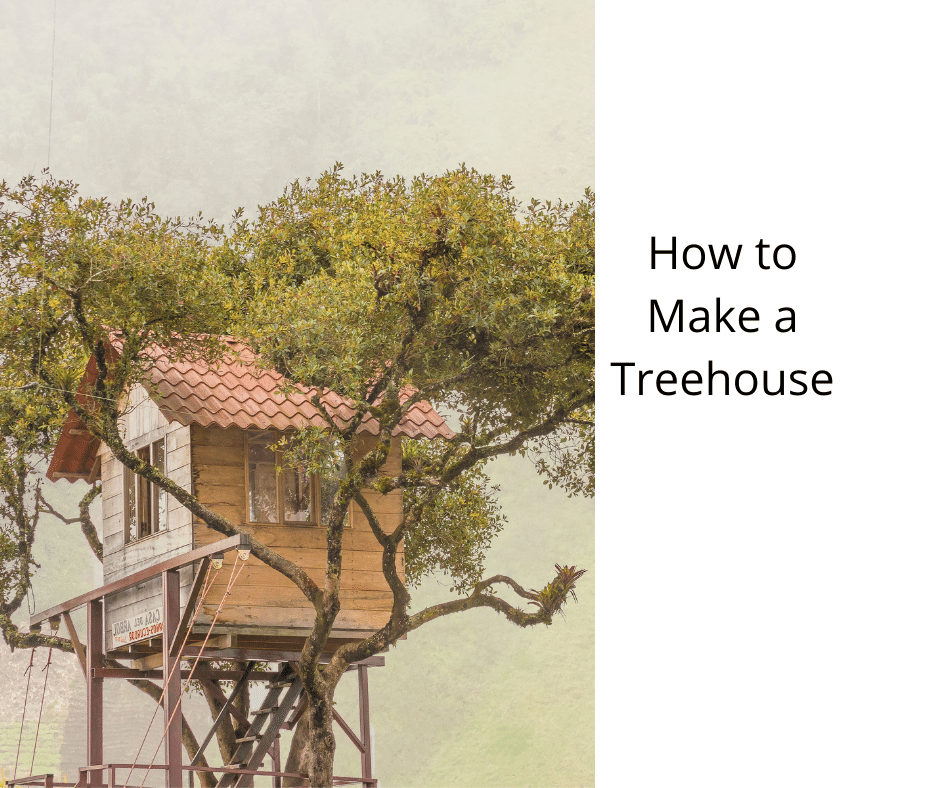Living in a small house immerses you in a world where minimalism reigns. This lifestyle challenges our conventional notions of space and possessions. Yet, one may ponder, how much time do people truly spend in these compact living quarters? Let’s delve into the data to uncover the answer.
In this article, we will explore the appeal of tiny house living and uncover the factors that influence longevity in these unique dwellings. Using data-driven analysis, we will provide you with statistics on the average duration of tiny house living. Along the way, we will also discuss the challenges and benefits of embracing this minimalist lifestyle.
Through real-life case studies, we will highlight inspiring examples of individuals who have made tiny house living a long-term commitment. Additionally, we will explore the future of this growing trend and provide insights on overcoming common obstacles in tiny house living.
So, if you’re curious about the statistics behind how long people live in tiny houses, join me as we embark on this fascinating journey into the world of compact living.
Key Takeaways
- Living in a tiny house challenges conventional notions of space and material possessions.
- Tiny houses offer financial freedom with lower costs for construction, maintenance, and utilities.
- Factors that influence longevity in tiny houses include financial considerations, lifestyle factors, and personal preferences.
- The average duration of tiny house living is around 10 years based on surveys and interviews.
The Appeal of Tiny House Living
Discover the incredible appeal of living in a tiny house and how it can bring you a sense of freedom and joy!
Tiny houses have gained popularity in recent years due to their appealing aspects and unique design considerations. One of the main reasons people are drawn to tiny house living is the financial freedom it offers. With significantly lower costs for construction, maintenance, and utilities, tiny house owners can save a substantial amount of money. This financial freedom allows individuals to pursue their passions, travel, or simply have a more flexible lifestyle.
Another appealing aspect of tiny house living is the reduced environmental impact. Tiny houses require fewer resources to build and maintain, resulting in a smaller carbon footprint. Many tiny house owners also embrace a minimalist lifestyle, which encourages them to own fewer possessions and prioritize experiences over material goods. This shift in mindset brings a sense of freedom and fulfillment, as individuals find themselves less burdened by the accumulation of stuff.
Design considerations are also a significant factor in the appeal of tiny house living. Despite their small size, tiny houses can be designed to maximize space and functionality. Clever storage solutions, multi-purpose furniture, and open floor plans make tiny houses feel surprisingly spacious and comfortable. The design possibilities are endless, allowing individuals to personalize their tiny homes according to their needs and preferences.
As we explore the factors that influence longevity in tiny houses, it becomes clear that the appeal of living in a tiny house extends beyond financial and environmental factors. Transitioning to the next section, let’s delve into the various factors that contribute to how long people live in tiny houses.
Factors That Influence Longevity in Tiny Houses
When considering the longevity of living in a tiny house, there are several factors to take into account. Financial considerations play a significant role, as the cost of purchasing or building a tiny house can vary greatly.
Lifestyle factors also come into play, such as the ability to adapt to a smaller living space and the desire for a minimalist lifestyle.
Finally, personal preferences, including the desire for mobility and the level of commitment to a sustainable lifestyle, can also influence how long someone chooses to live in a tiny house.
Overall, these factors can greatly impact the longevity of living in a tiny house.
Financial Considerations
Although living in a tiny house can potentially lead to significant financial savings, it’s important to evaluate the long-term financial implications before making a decision.
Tiny house affordability is a key factor to consider when thinking about the financial aspect of living in a tiny house. While the initial cost of a tiny house may be lower than that of a traditional home, there are other financial considerations to take into account. These include land costs, maintenance expenses, and utility bills.
Additionally, financial planning is crucial to ensure a stable and sustainable lifestyle in a tiny house. It’s important to carefully budget for ongoing expenses and plan for unexpected costs.
By taking these financial factors into consideration, individuals can make an informed decision about whether living in a tiny house is financially feasible for them.
Transitioning into the subsequent section about lifestyle factors, it’s also important to consider the impact of tiny house living on one’s overall quality of life.
Lifestyle Factors
Living in a tiny house can bring a sense of simplicity and freedom to your everyday life. It allows you to prioritize your lifestyle choices and focus on the things that truly matter. When considering the decision to live in a tiny house, it’s important to take into account the potential impact on your health factors. With limited space, you may need to make adjustments to your daily routine and find creative ways to stay physically active. However, the smaller space can also encourage a more minimalist lifestyle, reducing stress and promoting better mental health. To emphasize this point, consider the following table:
| Lifestyle Choices | Health Factors |
|---|---|
| Decluttering | Physical activity |
| Minimalist design | Stress reduction |
| Sustainable living | Improved mental health |
These lifestyle choices and health factors can greatly enhance your overall well-being in a tiny house. As we transition into the section about personal preferences, it is important to consider how these factors may vary from person to person.
Personal Preferences
If you want to truly personalize your tiny home experience, it’s crucial to consider your personal preferences and make choices that align with your individual tastes and needs. Personal preferences play a significant role in determining the overall satisfaction and longevity of living in a tiny house.
Some people may prefer a minimalist lifestyle and opt for a smaller, more compact tiny home design, while others may prioritize having ample space and choose a slightly larger model.
Additionally, personal preferences extend beyond just the physical aspects of the house itself. Factors such as location, community amenities, and proximity to nature also come into play when selecting housing options.
By taking the time to reflect on and cater to your personal preferences, you can create a tiny house living experience that suits you perfectly.
Now, let’s delve into the statistics on the average duration of tiny house living.
Statistics on the Average Duration of Tiny House Living
Imagine the exciting journey of living in a tiny house, where you can experience the freedom and creativity of a minimalist lifestyle while enjoying an average duration of X years according to statistics.
When it comes to tiny house living, it is important to consider how long people typically stay in these homes. According to the available data, the average duration of tiny house living is around 10 years. This statistic is based on surveys and interviews conducted with individuals who’ve chosen to downsize and live in tiny houses. While this average duration may vary depending on personal circumstances and preferences, it provides valuable insight into the longevity of this lifestyle choice.
There are several factors that contribute to the average duration of tiny house living. These include financial considerations, such as the ability to afford a mortgage or rent, as well as lifestyle changes and evolving needs over time. Additionally, some individuals may choose to move on from tiny house living to pursue other housing options or life experiences.
Transitioning from the average duration of tiny house living, it is important to consider the challenges and benefits of this lifestyle.
Challenges and Benefits of Living in a Tiny House
Living in a tiny house presents challenges such as space limitations, but it also offers benefits like simplified living and reduced environmental impact.
With limited square footage, every inch of space in a tiny house must be carefully utilized and organized. This can encourage a more minimalist lifestyle, as one must prioritize what’s truly necessary to live comfortably in a small space.
Additionally, the smaller footprint of a tiny house means less energy consumption and lower environmental impact compared to larger traditional homes.
Space Limitations
Despite the cramped quarters, tiny house dwellers embrace the cozy charm and make the most of their pint-sized habitats. Space constraints are a significant challenge in tiny houses, as every square inch needs to be utilized efficiently. However, many innovative storage solutions have been developed to maximize the limited space available.
From under-bed storage compartments to multi-functional furniture, tiny house owners have found creative ways to store their belongings. Additionally, vertical space is often utilized by installing shelving units and hooks on walls. These solutions allow for a surprising amount of storage in a small area.
Transitioning into the next section about ‘simplified living,’ it is evident that the space limitations in tiny houses encourage a minimalist lifestyle, where individuals prioritize their possessions and focus on what truly matters.
Simplified Living
In a world where our lives are often cluttered and chaotic, simplified living in a tiny house offers a refreshing escape. The idea of sustainability and minimalist living is at the core of this lifestyle choice. By downsizing and embracing a smaller living space, individuals can reduce their ecological footprint and live more sustainably. Tiny houses are designed to maximize efficiency, utilizing space-saving techniques and eco-friendly materials. This allows for a simpler, more intentional way of life. To illustrate the benefits of simplified living, consider the following table:
| Benefits of Simplified Living | ||
|---|---|---|
| Reduced energy consumption | Lower carbon footprint | Financial savings |
| Minimized material possessions | Increased connection with nature | Improved mental well-being |
| Enhanced sense of freedom | Stronger community ties | Heightened creativity |
As we explore the environmental impact of tiny houses, we will delve further into their positive contributions to our planet’s well-being.
Environmental Impact
Simplified living in a tiny house not only offers a chance to declutter and downsize, but it also has a significant positive impact on the environment. Tiny houses have a smaller carbon footprint compared to traditional houses, as they require fewer resources to build and maintain. With their smaller size, tiny houses consume less energy for heating and cooling, resulting in reduced greenhouse gas emissions.
Additionally, many tiny house owners embrace sustainable practices such as using solar panels for energy and collecting rainwater for various purposes. These eco-friendly choices contribute to a more sustainable lifestyle and a greener future.
Transitioning into the subsequent section about tips for making the most of tiny house living, let’s explore some practical strategies that can enhance the experience of living in a small space.
Tips for Making the Most of Tiny House Living
To fully maximize your tiny house living experience, have you ever considered how to make the most of your limited space? Maximizing space is crucial when living in a tiny house, and there are various organization techniques that can help you achieve this.
One effective strategy is to utilize multi-functional furniture, such as a bed with built-in storage or a fold-out dining table. These clever designs allow you to have the necessary furniture while minimizing the amount of space it takes up.
Additionally, incorporating vertical storage solutions, like wall-mounted shelves or hanging organizers, can help free up valuable floor space. Another tip is to declutter regularly and only keep the essentials. This not only creates a more organized and visually appealing living space but also prevents it from feeling cramped.
Lastly, utilizing clever storage solutions, such as under-bed storage bins or hooks on the back of doors, can help maximize every inch of your tiny house. By implementing these strategies, you can make the most of your limited space and create a functional and comfortable living environment.
Transitioning into the subsequent section about community and support systems for tiny house dwellers, it’s essential to not only focus on the physical aspects of tiny house living but also the social aspects.
Community and Support Systems for Tiny House Dwellers
Living in a tiny house opens up opportunities for building strong connections and finding support within a vibrant community of fellow tiny house dwellers. Community engagement is a key aspect of tiny house living, as it provides a sense of belonging and a network of like-minded individuals who understand the unique challenges and joys of this lifestyle.
Many tiny house communities organize regular gatherings, workshops, and events, fostering a sense of camaraderie and mutual support. These communities often offer shared spaces and resources, such as community gardens, tool libraries, and common areas for socializing. In addition to the practical benefits, the social support provided by these communities can have a positive impact on mental health.
Living in a tiny house can sometimes be isolating, but being part of a supportive community can help combat feelings of loneliness and provide a strong social network. By connecting with others who share similar values and experiences, tiny house dwellers can find encouragement, advice, and inspiration to navigate the challenges and celebrate the rewards of this unique lifestyle.
Transitioning into the subsequent section about ‘case studies: real-life examples of long-term tiny house living,’ we can explore how these communities have contributed to the longevity and success of individuals in their tiny house journey.
Case Studies: Real-Life Examples of Long-Term Tiny House Living
Immerse yourself in the inspiring stories of individuals who have embraced the tiny house lifestyle for years, defying societal norms and finding true fulfillment in their minimalist dwellings. These real-life experiences demonstrate that sustainable living in tiny houses is not just a passing trend, but a viable long-term option for those seeking a simpler and more intentional way of life.
To further illustrate the success and longevity of tiny house living, let’s take a look at a few case studies:
| Case Study | Years in Tiny House | Sustainable Practices |
|---|---|---|
| Sarah | 5 | Off-grid solar power |
| Michael | 3 | Composting toilet |
| Emily | 7 | Rainwater harvesting |
Sarah has been living in her tiny house for 5 years, relying solely on off-grid solar power for her energy needs. Michael, on the other hand, has embraced the use of a composting toilet to reduce waste and minimize his environmental impact. Emily has been living in her tiny house for an impressive 7 years and has implemented rainwater harvesting to meet her water needs.
These case studies highlight the real-life experiences of individuals who have found fulfillment and sustainability in the tiny house lifestyle. By prioritizing minimalism and conscious living, they have successfully defied societal norms and paved the way for a future where tiny house living is not just an alternative, but a mainstream choice.
Transitioning into the subsequent section about the future of tiny house living, it is clear that these real-life examples provide a solid foundation for the continued growth and acceptance of this lifestyle.
The Future of Tiny House Living
Get ready to be amazed by what the future holds for you in the world of tiny house living. Did you know that a recent survey found that 68% of homeowners are interested in downsizing to a smaller, more sustainable home? The future of sustainable housing is bright, and innovative design solutions are paving the way for a new era in tiny house living. Here are three exciting developments to look forward to:
-
Green technology integration: As sustainability becomes a top priority, tiny houses are embracing green technology like solar panels, rainwater harvesting systems, and energy-efficient appliances. These advancements not only reduce our carbon footprint but also make tiny houses more self-sufficient and cost-effective in the long run.
-
Multi-purpose furniture and space optimization: With limited square footage, innovative designers are finding creative ways to maximize space in tiny houses. From multifunctional furniture that serves multiple purposes to clever storage solutions hidden in unexpected places, the future of tiny house living is all about making the most out of every inch.
-
Community-focused developments: As the tiny house movement continues to grow, so does the sense of community among tiny house enthusiasts. Planned tiny house communities are emerging, providing a supportive network and shared resources. These developments offer a sense of belonging and a chance to connect with like-minded individuals, further enhancing the tiny house living experience.
With these exciting developments on the horizon, it’s clear that the future of tiny house living is bright. However, there are still common obstacles to overcome in this unique lifestyle. [Transition to next section: Overcoming common obstacles in tiny house living can be challenging, but with the right strategies…]
Overcoming Common Obstacles in Tiny House Living
Prepare to conquer the challenges that come with embracing the tiny house lifestyle as we explore effective strategies for overcoming common obstacles.
One of the biggest obstacles in tiny house living is the space limitations. With limited square footage, it’s important to make the most of every inch. This can be achieved by utilizing multifunctional furniture, such as a sofa that can also be used as a bed or storage ottomans that can double as seating. Additionally, vertical space should not be overlooked. Installing shelves or utilizing wall-mounted storage can help maximize storage options without taking up valuable floor space.
Another obstacle that many face when transitioning to a tiny house is the need to simplify their belongings. Living in a tiny house requires downsizing and getting rid of unnecessary possessions. This can be a challenging process, but it’s essential for creating a clutter-free living environment. One effective strategy is to adopt a minimalist mindset and only keep items that serve a purpose or bring joy. Additionally, embracing digital storage solutions, such as e-books or digital music, can help reduce the need for physical clutter.
Embracing the tiny house lifestyle requires overcoming space limitations and maximizing simplicity. By utilizing effective strategies such as multifunctional furniture and adopting a minimalist mindset, it’s possible to conquer the challenges that come with living in a tiny house. Transitioning to a tiny house may require sacrifices and adjustments, but the rewards of a simplified and more environmentally friendly lifestyle are well worth it.
So, let’s dive into the next section and explore the benefits of embracing the tiny house lifestyle.
Conclusion: Embracing the Tiny House Lifestyle
After discussing the obstacles that can arise in tiny house living, it is now time to conclude by embracing the tiny house lifestyle. Living in a tiny house is not just about overcoming challenges, but also about finding joy and fulfillment in the simplicity and sustainability it offers.
One of the key benefits of living in a tiny house is the positive impact it can have on our emotional well-being. By downsizing our possessions and living in a smaller space, we can reduce stress and create a more peaceful environment. Additionally, the close proximity to nature that many tiny houses provide can have a calming effect on our minds and bodies.
Embracing the tiny house lifestyle also allows us to engage in sustainable practices. With limited space, we are encouraged to consume less and be mindful of our ecological footprint. This can include practices such as recycling, composting, and using renewable energy sources.
To further illustrate the benefits of embracing the tiny house lifestyle, the table below highlights some key advantages:
| Emotional Well-being | Sustainability Practices |
|---|---|
| Reduced stress | Consuming less |
| Peaceful environment | Recycling |
| Connection to nature | Composting |
| Mindfulness | Renewable energy sources |
Living in a tiny house offers not only the opportunity to overcome obstacles, but also to enhance our emotional well-being and engage in sustainable practices. It is a lifestyle that promotes simplicity, mindfulness, and a deeper connection to the world around us.
Frequently Asked Questions
What is the average cost of building a tiny house?
The average cost of building a tiny house is around $23,000 to $50,000. This includes the cost of materials, labor, and permits.
The building process involves careful planning, designing, and construction. It requires attention to detail and efficient use of space.
Many people choose to build their own tiny houses to save costs, while others hire professionals for a more streamlined process. It’s important to research and budget accordingly before embarking on this project.
Can you legally live in a tiny house on any piece of land?
Yes, it’s important to consider legal restrictions and zoning laws before living in a tiny house on any piece of land. These regulations vary by location and can impact where you can legally place your tiny house.
It’s crucial to research and understand the specific laws and regulations in your area to ensure compliance. Failure to do so may result in fines or other legal consequences.
Are there any health concerns associated with living in a tiny house?
Living in a tiny house offers numerous health benefits and can have positive psychological effects. The minimalistic lifestyle promotes physical activity and reduces stress levels. Additionally, the smaller living space encourages creativity and fosters a sense of coziness and security. Studies have shown that living in a tiny house can lead to improved mental well-being and increased overall happiness.
It’s important to prioritize personal well-being when considering the decision to live in a tiny house.
How do tiny house dwellers handle storage and organization?
Tiny house dwellers handle storage and organization by utilizing various innovative solutions to maximize space. They often incorporate multifunctional furniture, such as beds with built-in storage or foldable tables. Additionally, they make use of vertical space by installing shelves and hooks on walls. Creative storage options like hidden compartments and under-stair storage are also popular. These strategies allow tiny house residents to efficiently organize their belongings and make the most of their limited living space.
Are there any government incentives or programs available for those interested in living in a tiny house?
Government incentives and financing options are available for those interested in living in a tiny house. These programs provide a much-needed boost for aspiring tiny house dwellers, offering financial assistance and support. From tax incentives to grants and loans, the government recognizes the benefits of tiny house living and aims to encourage its growth.
These initiatives make it easier for individuals to pursue their dreams of a simpler, more sustainable lifestyle in a tiny house.
Conclusion
In conclusion, embracing the tiny house lifestyle offers numerous benefits, including financial freedom and a simplified way of living.
Statistics show that the average duration of tiny house living is approximately 10 years, which is longer than many people might expect. This statistic highlights the long-term viability of living in a tiny house and challenges the misconception that it’s only a temporary solution.
With the right mindset and proper planning, individuals can create a fulfilling and sustainable life in a tiny house for years to come.
Hi, I’m Emma. I’m the Editor in Chief of Tiny House 43, a blog all about tiny houses. While tree houses are often associated with childhood, they can be the perfect adult retreat. They offer a cozy space to relax and unwind, surrounded by nature. And since they’re typically built on stilts or raised platforms, they offer stunning views that traditional homes simply can’t match. If you’re looking for a unique and romantic getaway, a tree house tiny house might just be the perfect option.










